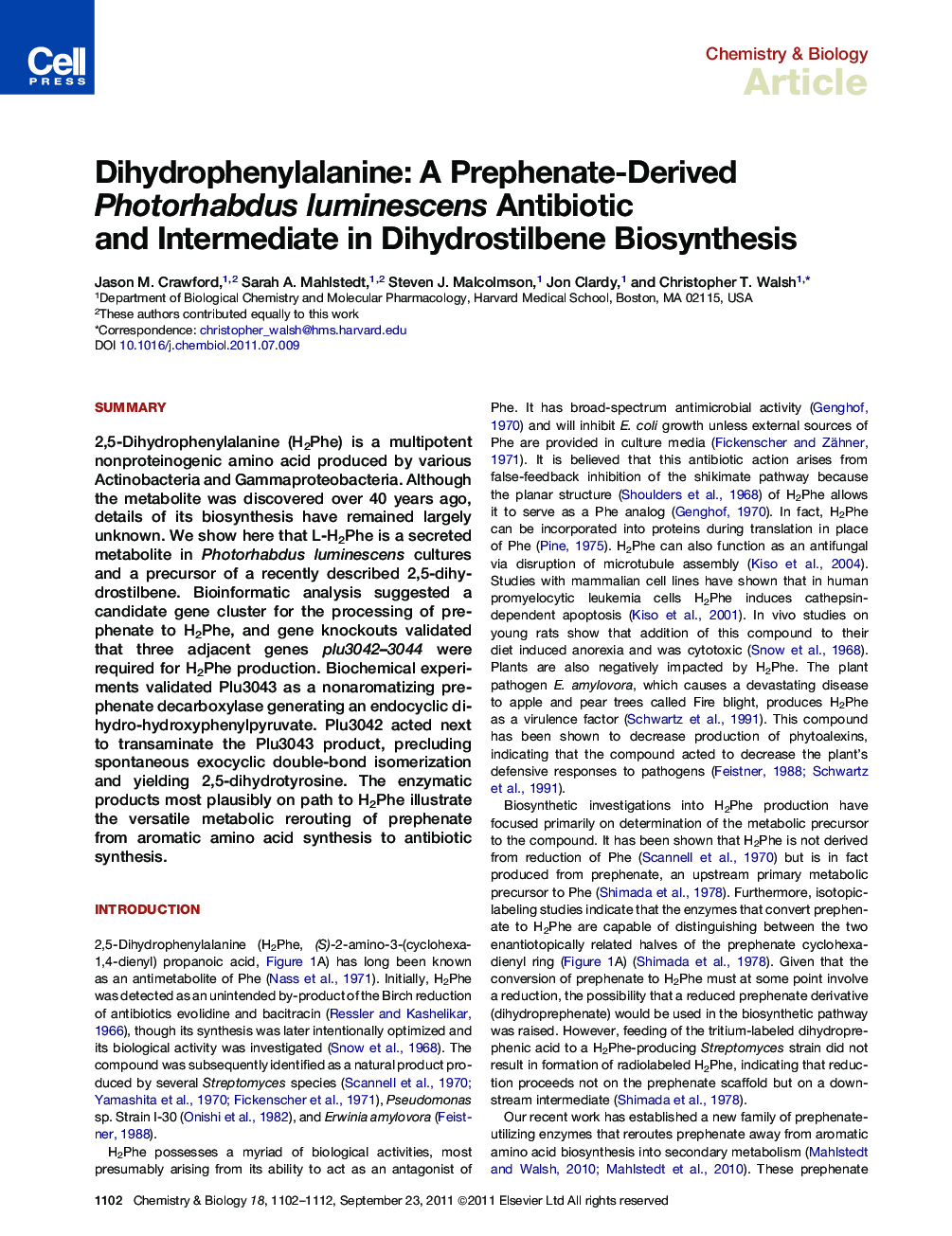| کد مقاله | کد نشریه | سال انتشار | مقاله انگلیسی | نسخه تمام متن |
|---|---|---|---|---|
| 1391389 | 983256 | 2011 | 11 صفحه PDF | دانلود رایگان |

Summary2,5-Dihydrophenylalanine (H2Phe) is a multipotent nonproteinogenic amino acid produced by various Actinobacteria and Gammaproteobacteria. Although the metabolite was discovered over 40 years ago, details of its biosynthesis have remained largely unknown. We show here that L-H2Phe is a secreted metabolite in Photorhabdus luminescens cultures and a precursor of a recently described 2,5-dihydrostilbene. Bioinformatic analysis suggested a candidate gene cluster for the processing of prephenate to H2Phe, and gene knockouts validated that three adjacent genes plu3042–3044 were required for H2Phe production. Biochemical experiments validated Plu3043 as a nonaromatizing prephenate decarboxylase generating an endocyclic dihydro-hydroxyphenylpyruvate. Plu3042 acted next to transaminate the Plu3043 product, precluding spontaneous exocyclic double-bond isomerization and yielding 2,5-dihydrotyrosine. The enzymatic products most plausibly on path to H2Phe illustrate the versatile metabolic rerouting of prephenate from aromatic amino acid synthesis to antibiotic synthesis.
Graphical AbstractFigure optionsDownload high-quality image (61 K)Download as PowerPoint slideHighlights
► A biosynthetic gene cluster was identified for the antibiotic dihydrophenylalanine
► Dihydrophenylalanine is a metabolic precursor in dihydrostilbene biosynthesis
► Dihydrophenylalanine is derived from decarboxylase-mediated routing of prephenate
► Transamination of dihydro-hydroxyphenylpyruvate averts exocyclic isomerization
Journal: - Volume 18, Issue 9, 23 September 2011, Pages 1102–1112